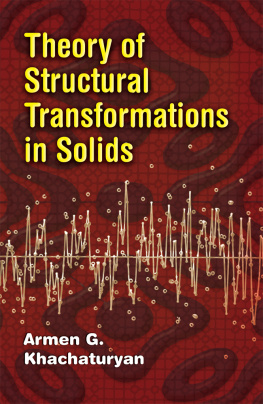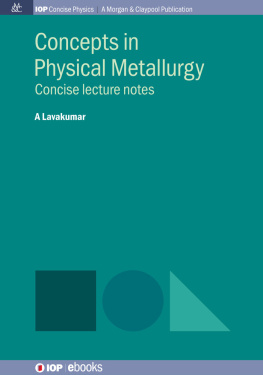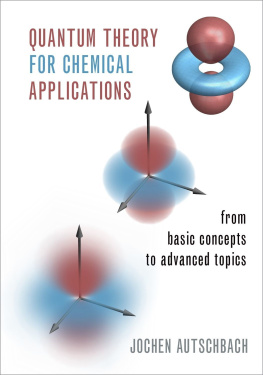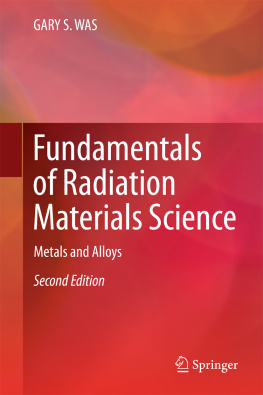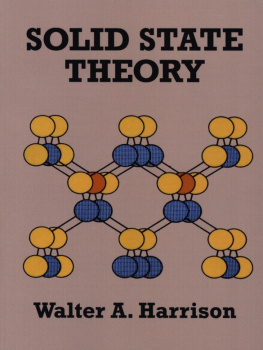THEORY OF STRUCTURAL
TRANSFORMATIONS
IN SOLIDS
ARMEN G. KHACHATURYAN
Department of Materials Science and Engineering
Rutgers University
DOVER PUBLICATIONS, INC.
Mineola, New York
Copyright
Copyright 1983, 2008 by Armen G. Khachaturyan
All rights reserved.
Bibliographical Note
This Dover edition, first published in 2008, is an unabridged republication of the work originally published by John Wiley & Sons, Inc., New York, in 1983. A new Preface and an Errata list have been added to the Dover edition.
Library of Congress Cataloging-in-Publication Data
Khachaturyan, A. G. (Armen Gurgenovich), 1935
Theory of structural transformations in solids / Armen G. Khachaturyan.
p. cm.
Originally published: New York : Wiley, c1983.
Includes bibliographical references and index.
eISBN-13: 978-0-486-78344-4
1. Alloys. 2. Physical metallurgy. 3. Phase transformations (Statistical physics). I. Title.
TN690.K453 2008
669dc22
2007034502
Manufactured in the United States of America
Dover Publications, Inc., 31 East 2nd Street, Mineola, N.Y 11501
PREFACE TO THE DOVER EDITION
When Theory of Structural Transformations in Solids was published by John Wiley & Sons, Inc., in 1983, it was the first collection of results related to the theory of submicron, nano, and atomic scale structures formulated in terms of spatially continuous density functions. These density functions, today called Phase Fields, are chosen to identify the structural characteristics of different phases, domains, and atomic configurations. This approach as applied to structural transformations was completely novel twenty-five years ago, and placed the physics of structural materials on the same footing as ferroelectrics and ferro-magnets where density fields, magnetization, and polarizations have been always used. The Phase Field approach as applied to structural transformations is very convenient because it characterizes microstructure formation in solids via the temporal and spatial dependence of evolving continuous functions. Since no a priori constraints on the possible transformation pathways are required, it has the power to predict the geometry of complex structures and their evolution involving a change of their topology. This is where the Phase Field approach provides its greatest advantage, and this is the reason why its use has dramatically increased in recent years.
The intimate relation between the transformation-induced elastic strain and microstructure is one of the focal points of the book. The strain energy plays a very special role in microstructure formation. Virtually any solid-solid transformation generates elastic strain caused either by a crystal lattice incompatibility of the coexisting phases, their volumetric mismatch, or both. The elastic strain energy generated by a phase transformation is distinct from the conventional (chemical) free energy considered in classical thermodynamics that is caused by finite-range interatomic interactions. Instead, the elastic energy is the sum of the infinite-range (dipole-dipole like) strain-induced interaction of all finite elements of elastically incompatible phases or domains and is dependent on their spatial architecture. The elastic energy is thus the driving force for establishing the optimal microstructure geometry wherein configurational features of the microstructure are the relaxing internal thermodynamic parameters. The stress-accommodating microstructures formed in multiphase or multidomain systems are, in fact, domain structures whose origin is conceptually similar to that of domain structures in ferroelectric/ferromagnetic systems. In particular, this similarity is reflected in the fact that the Fourier space representation of the electrostatic/magneto-static energy of arbitrary ferroelectric/magnetic domain structures as formulated in the book is similar to that for the elastic energy of multiphase/multidomain structures. These equations have recently been rediscovered and successfully used in the theory of magnetic domains.
The book also provides a full treatment of the micromechanics of structurally heterogeneous states formulated in terms of density functions. This approach is today called Phase Field Microelasticity. This approach is different from that used in the classic solid state mechanics of coherent systems where the morphology of a multi-phase system is described by the topology of interface boundaries separating homogeneous particles of different phases. In the traditional approach the elastic strain is found by solving the elasticity equation with boundary conditions defined at the interfacial surfaces that reflect the phase incompatibility. Phase Field Microelasticity treats the problem of structurally inhomogeneous systems with continuously changing structural parameters (density functions) whose values distinguish the structural heterogeneities and determine their spatial location. This method is especially convenient for predicting the orientation relations and shapes of particles of constituent phases comprising the system. The general principles of Phase Field Microelasticity are formulated and examples of how to attack selected problems are presented. The method presented is not outdated because the continuously changing density functions are naturally suited for a characterization of the evolving heterogeneous structures. This approach is a building block of the Phase Field theories and modeling methods used today for predicting microstructure evolution.
In addition the book provides probably one of the most detailed accounts of the Static Concentration Wave approach and its applications to problems of atomic ordering and decomposition. The Concentration Wave interpretation of atomic ordering reveals the profound relationships between atomic structures of ordered and disordered phases, their symmetries, thermodynamics, and diffraction. It is also a powerful method for modeling the kinetics of atomic scale rearrangements in decomposition and ordering. The use of Concentration Waves has now become a quite standard way to interpret the diffraction patterns of ordering phenomena. The Static Concentration Wave approach is essentially an application of the Phase Field method extended to the atomic scale: Concentration Waves are Fourier representations of Atomic Density Fields that are density functions of the crystal lattice site coordinatese.g. the occupation probabilities of constituent atoms at crystal lattice sites of the underlying lattice. Unlike the conventional thermodynamic treatment of ordering phenomena involving atomic interchange between sublattices that must be specified a priori, the Atomic Density Field method is able to predict the geometry of these sublattices, the distribution of constituent atomic components between them, and atomic features of ordered domains and their interfaces.
Given the development of the Phase Field theories during recent years, it is important to mention the recent extension of the theory of displacive (martensitic, ferroelastic) phase transformations to the cases of dislocation dynamics and fracture. Similarities between these phase transformations and dislocation dynamics was noticed years ago. However, the formation and development of dislocations under applied stress is also a structural transformation caused by crystal lattice instability under applied stress. This instability is similar to the instability resulting in displacive phase transformations under a thermodynamic driving force. This similarity permits the application of Phase Field Microelasticity to dislocation dynamics in a way that is analogous to its application to martensitic transformations. That results is a generalized 3-dimensional Peierls-Nabarro theory of multi dislocation systems; it exactly reproduces the results of this theory in the case of a single straight dislocation. In fact, the Peierls-Nabarro theory was the first example of an application of the Phase Field approach to a problem of the crystal lattice rearrangement, in which the Burgers vector is a function of coordinates and is considered as a continuous and energy minimizing density field.
Next page
